The “megaport” set to overshadow Ancón
The project to establish a port in the beautiful and traditional bay of Ancón has generated a lot of protest from locals who reject that private investment should take precedence over local wildlife, the visual aspect of the bay, their livelihoods, property prices and tourism.
 As raw material is ripped out of Peruvian soil at an ever faster pace – fuelling rapid economic growth in centralized urban areas but marginalization in rural areas – Peru is running out of capacity for its cheap exportation abroad.
As raw material is ripped out of Peruvian soil at an ever faster pace – fuelling rapid economic growth in centralized urban areas but marginalization in rural areas – Peru is running out of capacity for its cheap exportation abroad.
Santa Sofía Puertos, a subsidiary of Grupo Romero who’s most recognisable brand is the bank BCP, intends to use the huge Ancón port for cereal exportation and a separate similarly size port in Huacho for mineral exportation.
Peruvians, particularly those in the cities, are generally impressed by the level of investment in their country, even during the unfortunately frequent instances when it seems to disproportionately benefit foreign investors and corrupt officials. Even this though generates jobs and wealth for those who are not super-rich.
But when the principle interests of the population are trampled upon things usually change. Patience wears yet thinner considering the lines between those authorities paid evaluate then grant or deny licences for projects, standing up for the rights of the people, and those who stand to make billions in profit are blurred if even existent.
Santa Sofía Puertos, whose spokesperson is an ex-minister in the government of Fujimori, has explained that the new port will generate hundreds of jobs and benefit local grain production. An overwhelming number of locals and tourists have come out to remind her that Ancón is already a very privileged bay with a keen artisan fishing industry, is a place where watersports is practised, constitutes an important archaeological area, is home to numerous historical events, has a thriving tourist industry, has a recovering property market and is known to be an important wildlife spot. Locals ask, is it worth destroying all this to benefit Grupo Romero and its shareholders?

Found on almost every door and window in the town
Pretty little town transformed
For many, including those who don’t live in the town but visit it, the most negative aspect of having a mega sea port within a stone’s throw is an aesthetic one. Looking out over the externally calm waters lined by a mix of modern luxury apartments and historical architecture, visitors enjoy a view of colourful fishing boats, gorgeous sunsets and if they’re lucky perhaps a dolphin or two.
The construction of the mega port would change this view to a never-ending stream of huge container ships. Not only that, but the port will be so huge it won’t even see the benefit of the calm waters of the sheltered bay. The huge breakwaters to be built out at sea are almost a high as the multi-storey apartment buildings lining the seafront. Arguing that this wouldn’t severely blight the view would be a lost cause. The length of the breakwater is equivalent to 13 city blocks, that is according to leaked documents that despite detailing with a project so grand in scale it has to be approved or denied by the highest levels of the publicly accountable government, has undergone every possible effort to be hidden from public view – by both the company and the government itself. The project has been shrouded in secrecy, explain locals, so that no resistance can be mounted to the plan until it is too late.
The trick that has been used to hide the scale of the mega project is to only release the figures for the main pier. The pier itself isn’t small – it will extend 700 metres out into the ocean with a perpendicular platform some 620 metres long. The company correctly points out that the closest part of the pier will be a full 2km from the town of Ancón.
What the publicly released data hides are the huge breakwaters and an area for a half-dozen container ships to anchor behind it, as well as a transit zone for the container ships to pass around the breakwaters. Including these elements will see the closest part of the port – i.e. the hulls of the ships themselves – just 650 metres away from the protected ecological zone and 1,100 metres away from the beach.
Artisan fishing no more, wildlife underthreat
The first inhabitants of Ancón, thousands of years ago, are thought to have settled here because of the unusually calm waters in an otherwise turbulent Pacific Ocean. The first residents of Ancón were small scale fishermen carrying out a profession still very visible today. Many of Ancón’s fishermen, born and raised here (the older ones having seen the once fishing village transform into a upscale resort then into a working class resort) are now set to loose their livelihoods. Their fishing waters are to be turned into an anchorage and shipping lanes that their tiny boats would be prohibited from entering.
With huge ships passing within hundreds of metres of the coast, it doesn’t take a genius to work out there is likely to be a negative effect. Worse still is the level of pollution the port is set to bring. Since the population of the town rose exponentially during the 70s and 80s due to internal migration from the mountains to the cities, the water in the bay has become ever more polluted. Huge container ships and a busy port adding to this will put a definitive end to swimming in the bay. What effect this will have on wildlife is anyone’s guess.
United together
The town, set to change forever with the approval of the project, has been united in its response. From simple fishermen to owners of exclusive holiday homes, all are angry that the project was approved by the government without any consultation, all are angry that they are expected to give up their rights to benefit large corporations, and all are angry that no impact studies were carried out prior to the approval of the project – that is, no studies other than those of the economic benefits to Grupo Romero or to the special interests involved. That the true scale of the project has been hidden from those that stand to be affected with the hope that the project would be approved, started and then completed before anyone knew what was happening has of course added insult to injury.
Unfortunately, what is now true across the globe, but more so in developing nations, as corporations surpass governments in wealth and power, our representatives now work for them, not for the people.
Tags: ancon, bcp, economy, environment, fishing, port, protest


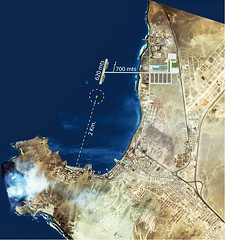


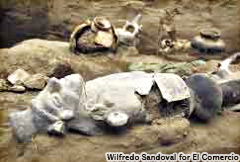
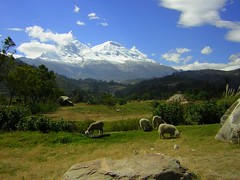
![Peru celebrates Independence Day with fountain of booze [Featured]](http://farm4.static.flickr.com/3236/2697186491_f7a74ae0da_m.jpg)
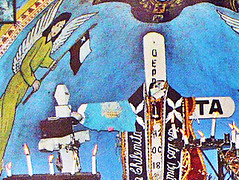
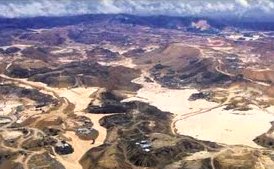
![Potato Planting in Chinchero [Featured]](http://farm4.static.flickr.com/3198/2687152654_97a0cc29fb_m.jpg)

